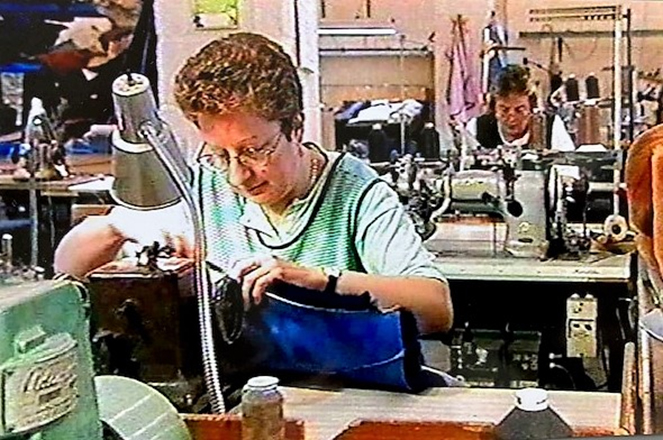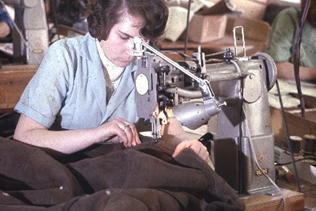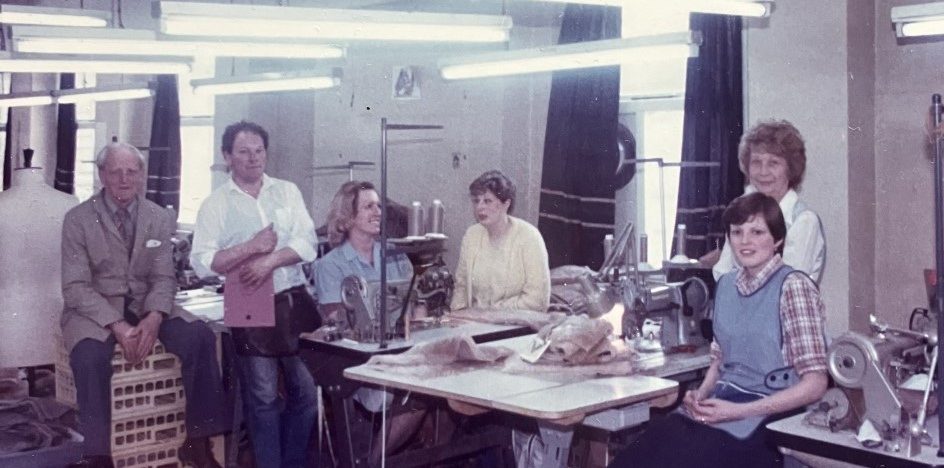‘Cos we had a mechanic – well, I don’t know if you can call him a mechanic really and truly – oh grief, if you had him come fix your machine, uh, God! ‘Cos his favourite tool was a hammer! Oh no, not him, please not him!
[Judith, Morlands]
You could be sent out to the mechanics to ask for a left-handed screw-driver! And if your machine broke down and you were on piecework you wanted that machine mended as quickly as possible. You didn’t want anybody there messing about or singing Elvis Presley songs – you wanted to get it done!
[Wendy, Morlands]
Baily’s, early 90s
Photo: Fran Truscott

The skiving was a rate, the buttoning and button holing was a different rate and each one of those rates had been timed by a time worker twice, plus a union rep; it was very unionised in those days, to make sure that the union rep agreed that this had been timed.
And it was also timed on different employees, to get an average. Because a fast employee is quicker, and therefore the timing and the rate is lower. And some people – and I don’t blame them – if they were being timed, they deliberately took their time. They knew that when they were on piecework they were going to be paid that rate. And if you speed up during the timing process, you’re doing yourself a disservice.
[Rosa, Morlands]

Photo: Howard Stone
Oooh don’t you go on my machine! If somebody had gone on your machine – you knew when you came in next day! You didn’t have to be there, you just knew, and shouted “Who’s been on this?!”
[Judith, Morlands]
They’d come down and time us but we’d always try and go a little bit slower, but you didn’t go too slow ‘cos they would know. They timed us. The stopwatch. They only picked certain people to time, so they probably thought, time the faster ones. But then everyone said, no slow down!
[Caroline, Morlands]
They’d be passed over onto a platform and the lady stitcher on the machine would be the other side, and she would pick the skins up and, one by one by one, join them by running them through an over-locking machine. She’d neaten it off and make it fast so that the stitches didn’t pull out, and then she’d go on to the next piece and the next piece and the next piece. And it went on and it went on, and you had reels and reels of different colours.
[Gerald, Morlands]

Photo: Gillian Baldwin

